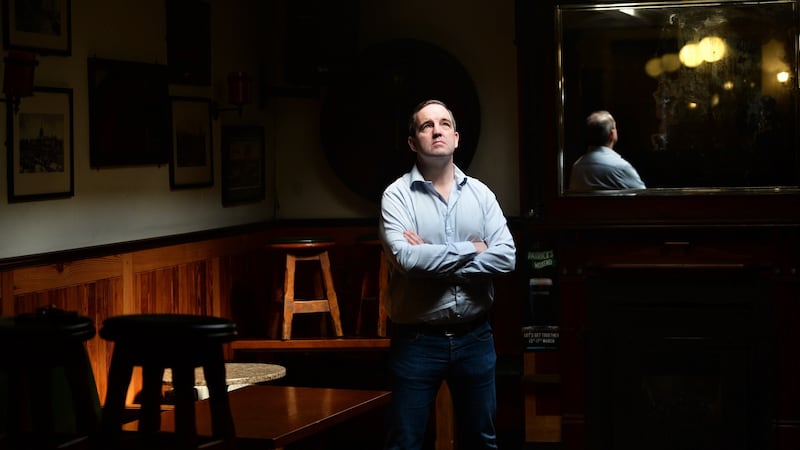The Swan has a long and storied history. The well-known Dublin pub derives its name from the time when most people were illiterate and pubs were identified by the animal symbol on the front door.
It sits on a site, at the corner of Aungier Street and York Street, where there has been a pub of some description since 1661. The existing building is one of only 12 extant Victorian pubs in the capital.
But like every other pub in the State it will have to adjust to the new realities of life in the Covid-19 era and has been shut since March 15th. If the Government’s roadmap for reopening is followed through, it will not open again for another three months until August 10th.

Ronan Lynch is the third generation of his family to run The Swan. His father Seán won 15 caps playing rugby for Ireland. He was also a British and Irish Lion and a bronze bust erected by his customers in 2002 sits in the corner of the pub.
Sitting under the wonderful Victorian skylight which brings light into his shuttered premises, Lynch says it is imperative that pubs open ahead of the Government’s schedule.

As the president of the Licenced Vintners Association (LVA), the representative body of the pub trade in Dublin, he says it would be unfair to allow restaurants and cafes open up on June 29th, but not pubs.
The LVA and the Vintners Federation of Ireland (VFI) have published radical proposals to accelerate pub openings.
Pubs, like restaurants, will be table service only. There will be no DJs or live music and social distancing will be maintained by only allowing four people per 10 metre square.
The Swan is a mid-sized Dublin pub. Mr Lynch estimates that on rough calculation, the LVA/VFI joint-proposal will allow for a maximum of 35 people on his premises at any one time. Though he helped to draw up the measures and present them to the Government, he is not sure that they apply to himself. On a Saturday night, The Swan might have 200 people on the premises.
“That doesn’t make any financial sense for us to open up under the current guidelines on two metres.”
Mr Lynch stressed that the point of seeking a reopening of pubs on June 29th rather than August 10th is to give publicans a choice. “Opportunity is the key word here. It all depends on their actual structure and what their fixed costs are. Customer confidence is going to be a big aspect. We will take a lot of learning from what is being done in other jurisdictions.”
He suggested it would greatly help the aim of social distancing if pubs were allowed to use outdoor areas or put barrels out the front for people to sit on.
There are 7,500 pubs in the country. Many people feel that Covid-19 will be the last straw for some pub businesses in rural areas which are suffering from the smoking ban, drink-driving laws and the drift towards drinking at home.
Last year Paris Texas in Kilkenny city won Irish pub of the year. It specialises in American food and can seat 125 people when full. Owner Pat Crotty employs 50 full and part-time staff.
He has already decided to pre-empt the new guidelines by ordering Perspex screens of the kind seen in shops. These, he points out, have already been trailed successfully in Stockholm. "I see it as the very obvious solution. It means you are in a safe place because nobody else is in your space," he says.
“Most Irish pubs and restaurants cannot do four people per 10 metre square as a rule of thumb. If you are using screens, the amount of space doesn’t matter. What matters is if I am safe in that space.”
Mr Crotty said the World Health Organisation (WHO) guidelines on social distancing are "onerous", but he notes that they are to be applied "where possible" and there should be some flexibility around their interpretation.
The point, he stresses, is to keep customers and staff safe. “The biggest difficulty is that having done all these things there will be more staff required,” he says.
“There is no point in me opening up doing only 25 per cent to 30 per cent of my previous business. If I do that, I might as well close the door and die slowly. If I close the door now, I’ll die fast.”




















